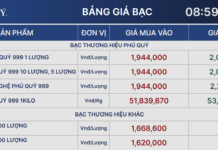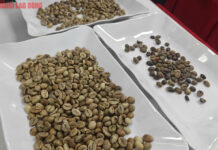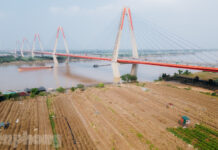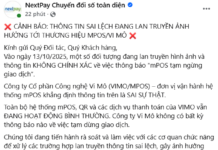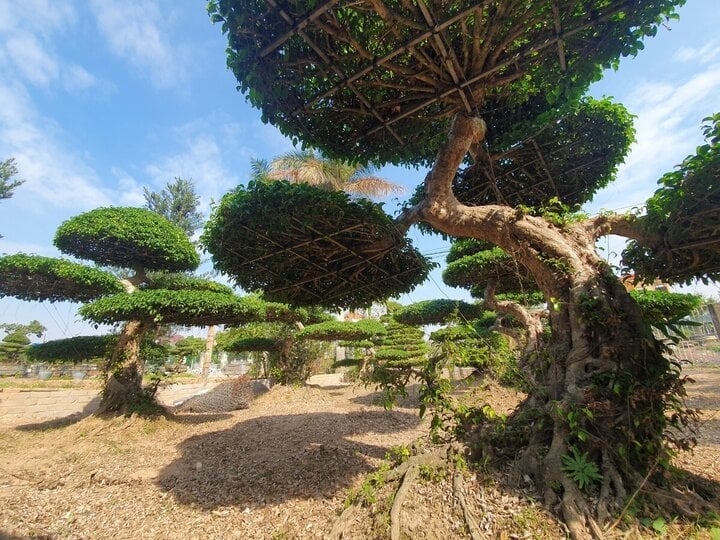
Diem Xa bonsai village (Nam Truc, Nam Dinh) has a history of over 800 years. The bonsai master of this place is To Trung Tu, an official of the Ly dynasty. Bonsai enthusiasts both inside and outside the country are familiar with the type of tree associated with this place, called “Nam Dien bonsai”.
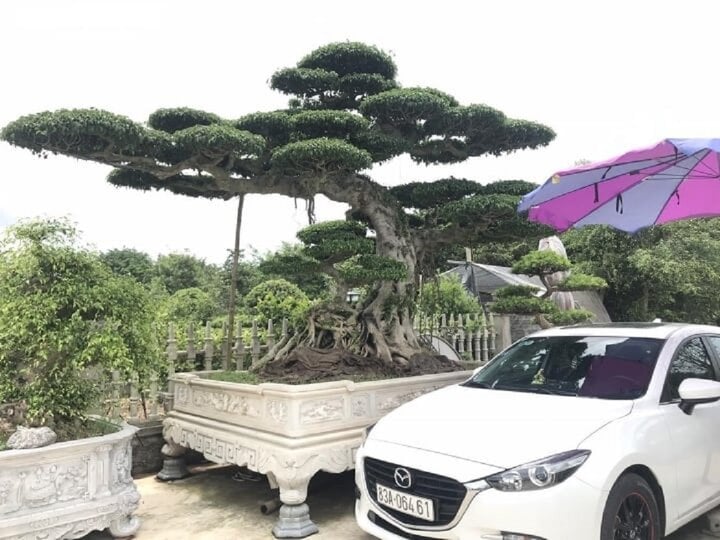
Among them, the dragon-shaped bonsai is more famous. No family in Dien Xa commune does not plant a few bonsai trees like this, even a whole garden.
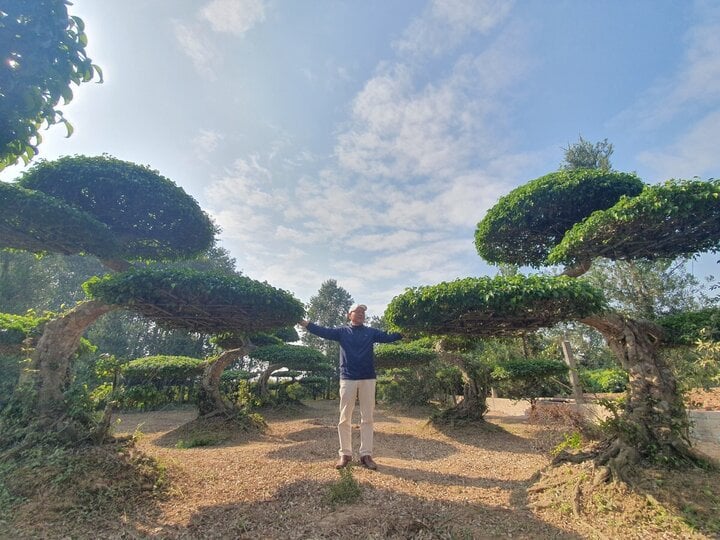
Artist Do Duy Quan, Vice Chairman of the Dien Xa Ornamental Plants Association, has been working with bonsai for over 30 years and owns a bonsai garden. Mr. Quan said that 2024 is the Year of the Tiger, so many bonsai enthusiasts have switched to playing dragon-shaped bonsai. Therefore, dragon-shaped bonsai are also sought after by many people.
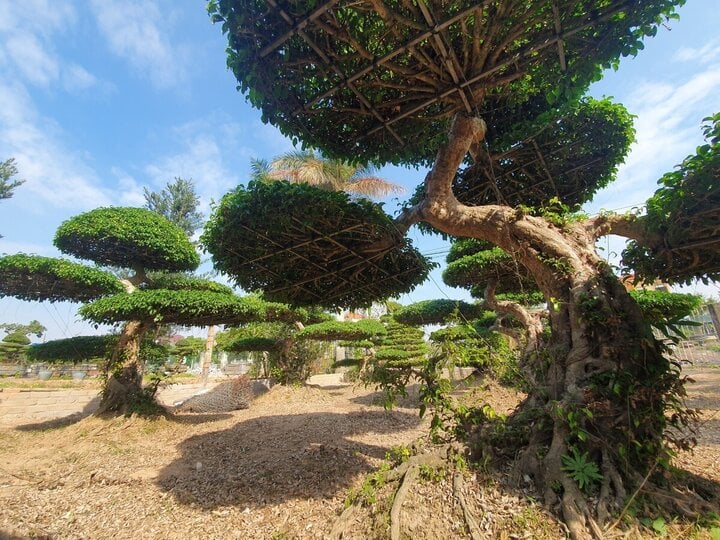
Among the 12 zodiac animals, the dragon represents authority, prosperity, and is a supreme creature. To own dragon-shaped bonsai trees that are several decades to hundreds of years old, many people have come to the birthplace of the bonsai industry.
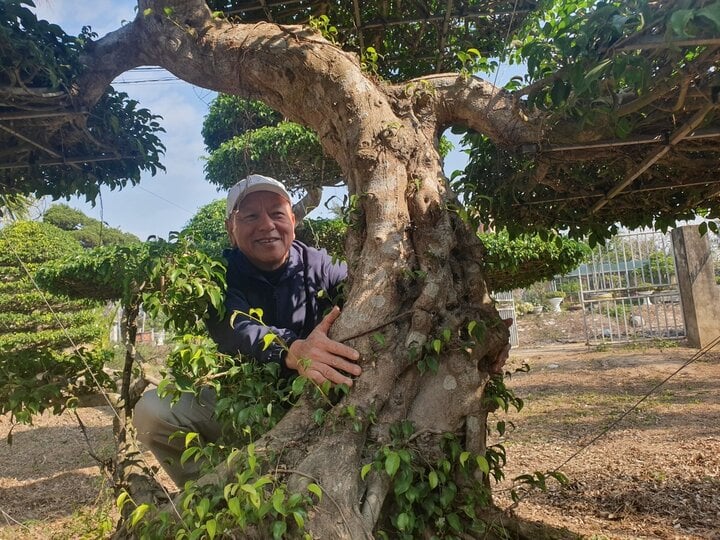
Mr. Quan said that there are many poses for dragon-shaped bonsai trees, such as descending dragon, ascending dragon, dragon coiled in water, and intertwined dragons. However, currently, the descending dragon and ascending dragon poses are preferred by many people. One characteristic that makes Nam Dien bonsai very popular is its long-lasting shape. Once the tree is beautiful, it will remain stable for a long time.
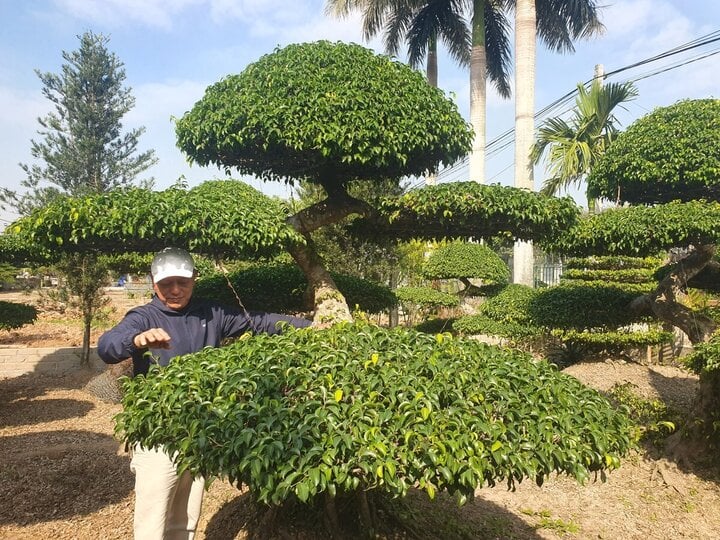
After thousands of years, the land of Nam Dien (Dien Xa commune today) has cultivated diverse types of bonsai trees with various poses, hidden meanings.
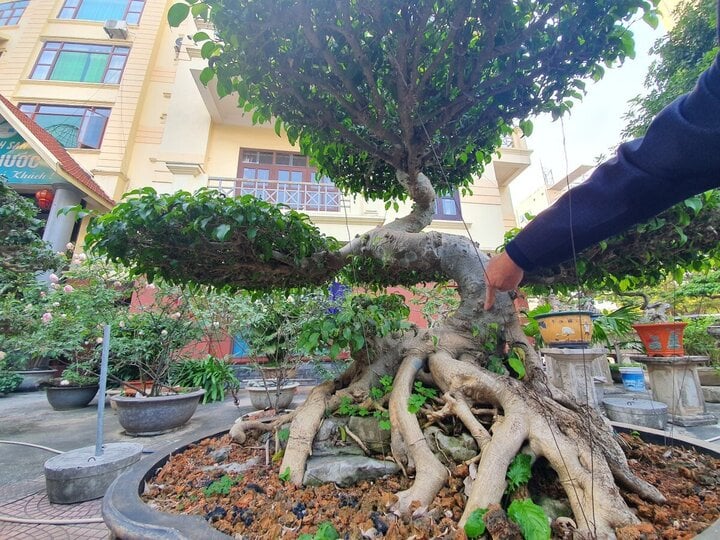
Dragon-shaped trees have a common characteristic of long, twisted trunks, soft and flexible like a moving dragon. The tree branches are bent into dragon feet. The leaves are small and sparse. The tree roots are often the head of the dragon, so they have to be large and have many bulges. The head, trunk, and tail must depict the grandeur of the dragon.
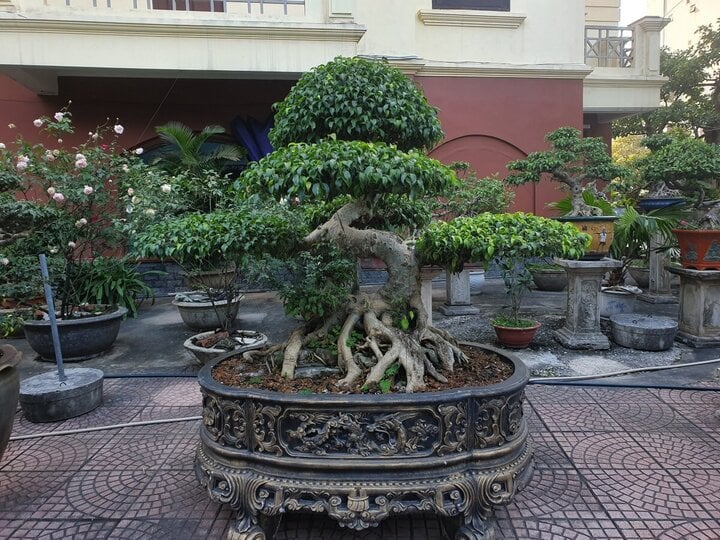
To create a dragon-shaped bonsai, people in Dien Xa commune have to spend from 10 years to several decades bending and shaping the tree to achieve a stable form. Many people jokingly say about this shaping process: “Your life is for planting trees, and it is not until the next generations that they can enjoy it.”
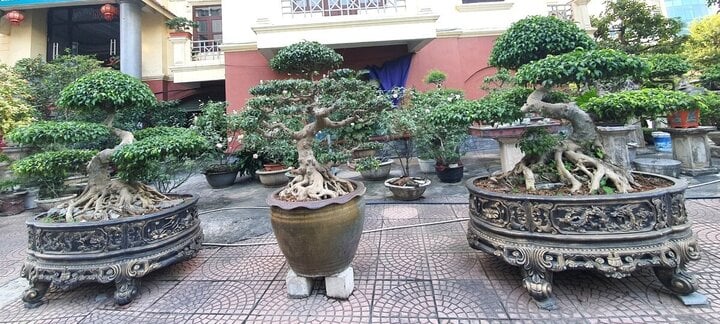
Close-up of a pair of dragon-shaped bonsai trees worth billions of Vietnamese dong, but the owner does not want to sell them because they are closely associated with his family from one generation to another.
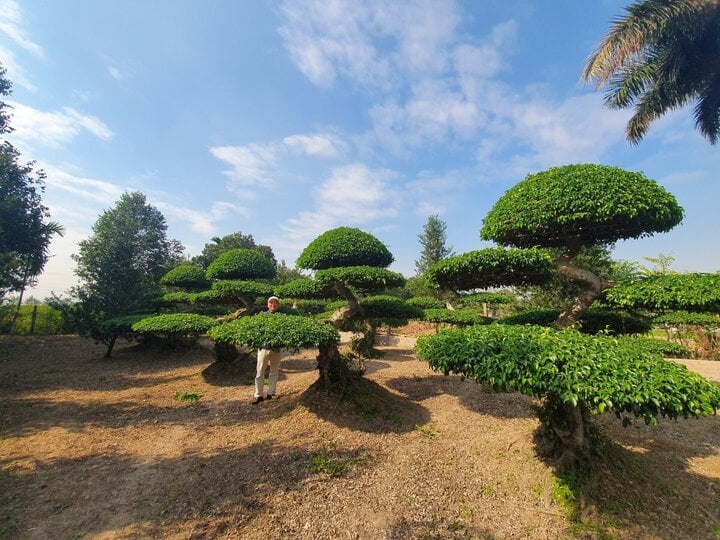
The people of Dien Xa commune spend many years tending and shaping bonsai trees to create stable and beloved tree forms.
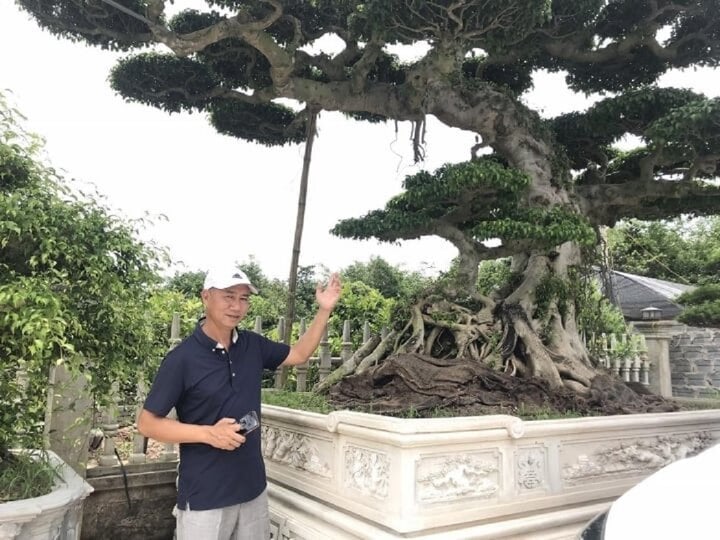
Artist Phan Van Thai stands next to a dragon-shaped bonsai tree that is over 60 years old and valued at 12 billion Vietnamese dong.

